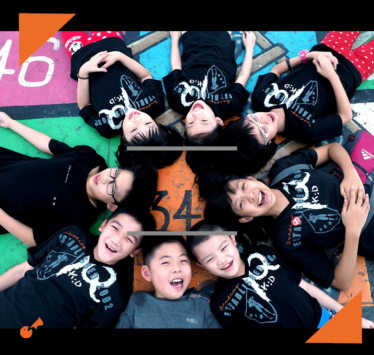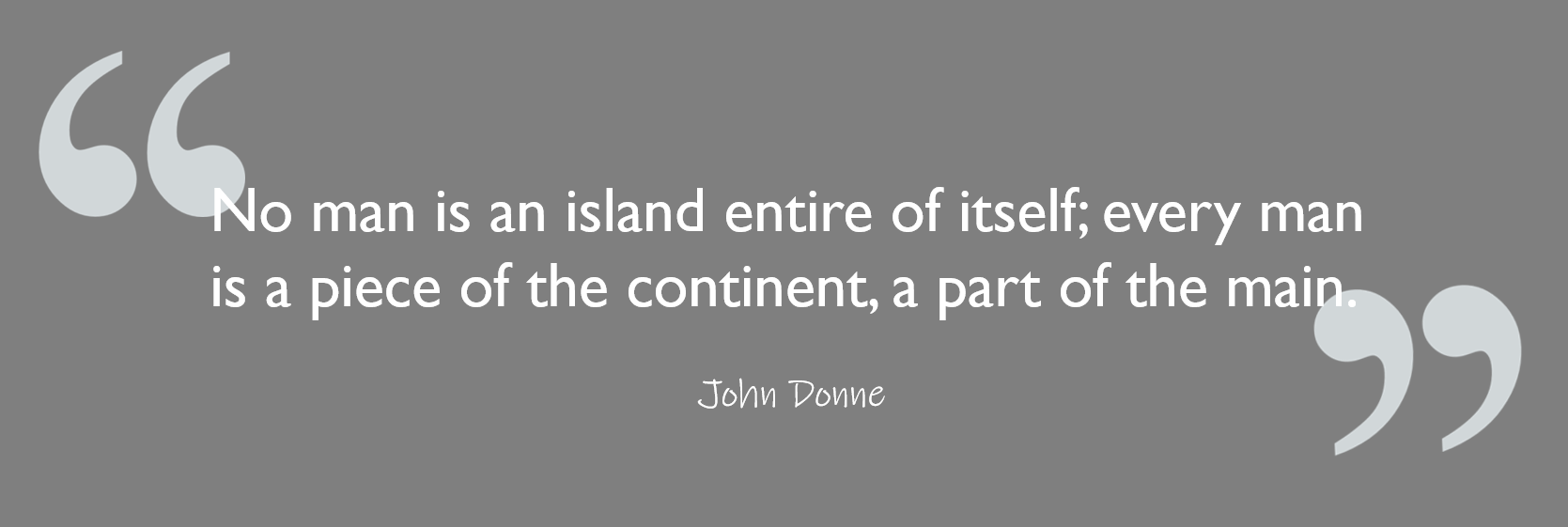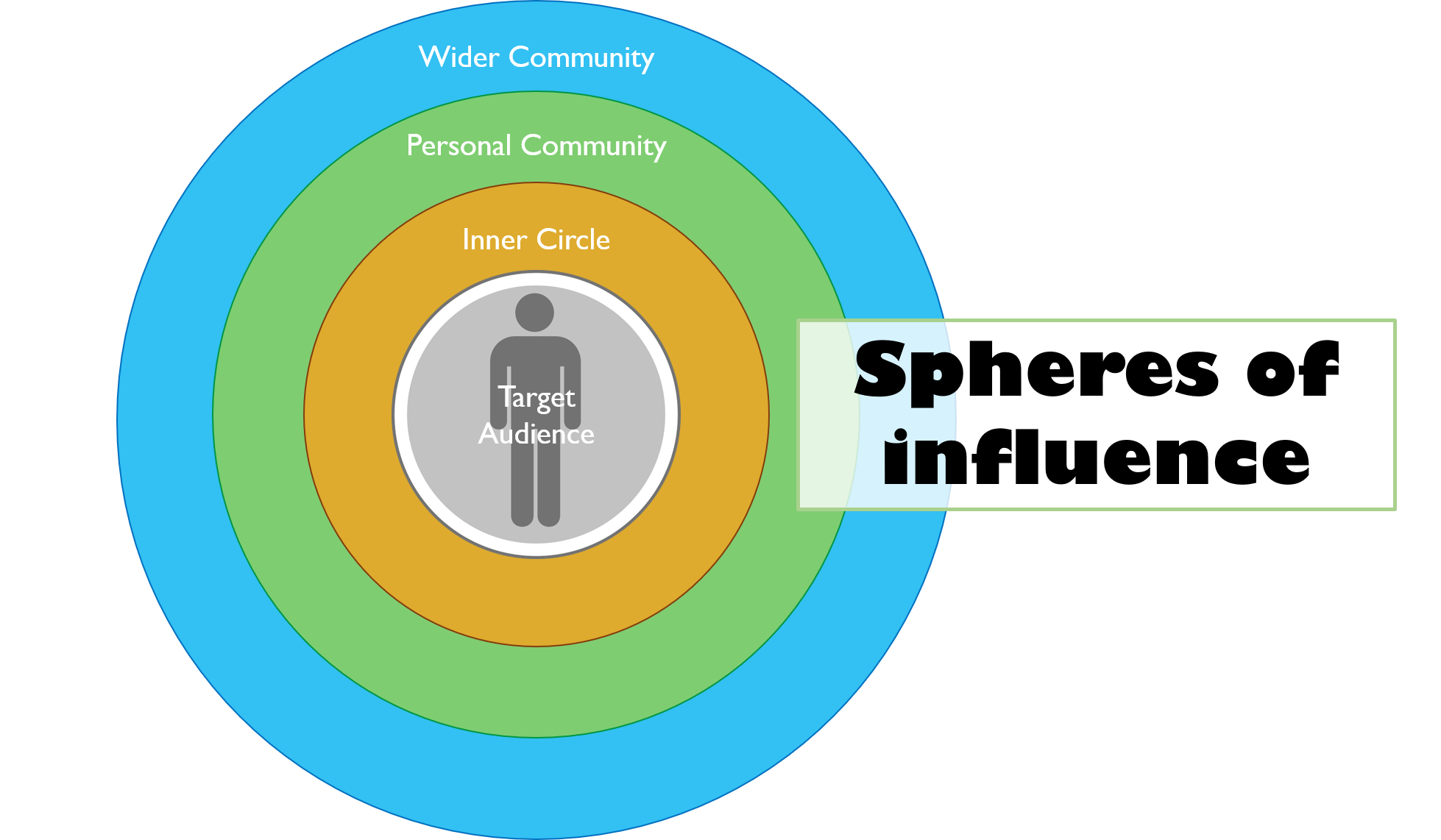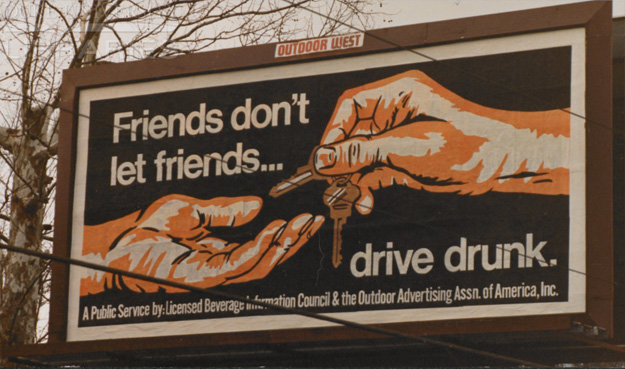
How the people you hang out with are influencing you
How the people you hang out with are influencing you

I’m a big advocate for getting to know your audience.
For digging in and understanding their worldview. Finding out what stresses them out, what excites them, and how they define success for themselves.
Exploring how they spend their time, what interests they have outside of work, and who they listen to.
[As I write this, I’m struck by how the description of good qualitative research sounds a lot like stalking.]
Yet a big piece of understanding your audience also involves looking at the people who surround them.
Who are the important individuals and groups around the audience that influence their decisions, actions and behaviors?
These individuals and groups live within different spheres around the audience, from their inner circle to their wider community. I call it the audience’s “spheres of influence“.

The Inner Circle
This group includes the people closest to us; the ones we rely on most for guidance and support.
Often it consists of people we admire and listen to, our close family members and friends, our spouses and significant others, and children of varying ages.
Our inner circle influences us in a variety of ways:
- Through their own decisions and actions, as we may begin to mirror what they do (for better or worse!)
- By how they judge the actions and decisions of others, which may make us more or less comfortable to try something new.
- By sharing information and opinions on related topics, that may sway our feelings.
- Through their displays of support as we aim to achieve a new goal or change.
Sometimes the inner circle plays a big role as we contemplate big decisions, like whether or not to get an electric vehicle (here comes the Consumer Reports articles from Dad!)
But sometimes this influence happens in quicker, more subtle ways – like when you order dessert because your spouse did (even if you didn’t want any!)
The Personal Community
Expanding beyond the inner circle is our personal community.
This includes peers and colleagues, neighbors, your expanded social circle, and community groups you interact with regularly.
Even though these individuals are not our closest friends or confidantes, they do hold a great amount of influence over us during certain settings. Often this influence takes the form of group norms (informal and formal ones) that everyone is expected to adhere to, peer pressure to join activities and stay with the group, and support or judgment delivered in response to your own actions.
These groups can play a big, positive role in influencing our own actions and behaviors – like a running club that won’t let you skip out on runs, pushes you to keep pace, and provides support every step of the way.
There is also great potential for these groups to incorporate new norms – like using less single-use plastics at the office – that support the audience’s own behavior (even outside of work) and shapes the culture and identity of the group.
The Wider Community
Now we’re pushing beyond the people we know personally into the wider world around us.
This can include strangers in the same location, social media connections who are not part of our personal community or inner circles, and opinion leaders we’re exposed to in the media.
Although we are not having personal interactions with members of this sphere, they do influence us through their own actions and demonstrated behavior, or through their public accounts of trends on what “most people” are doing.
If we see everyone cutting across the lawn even though there’s a “stay off the grass” sign posted, we are very likely to follow suit – mainly because that’s what everyone else is doing (even if it offends your personal principles of following rules).
Why these spheres matter
Even though you won’t include each of these groups in your outreach and communication efforts, it is important to understand the social spheres surrounding the target audience.
Exploring these spheres will help you to:
1) Understand the environment of social forces influencing the audience.
2) Identify individuals or groups you may want to feature when showing the desired behavior.
3) Explore if it would be more impactful to send messages to the sphere rather than to the audience itself.
4) Identify project tactics to reach spheres that will help the audience achieve the behavior objective.

The good news is that these individuals or groups likely won’t require their own full-fledged marketing and communications effort.
Instead, you can select a few tactics (shareable information, commitment or support cards, behavior prompts and reminders, etc.) that will secure the buy-in, action and support needed from these groups.
Have fun storming these spheres!


